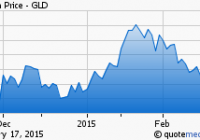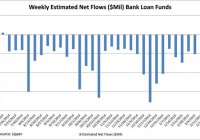Oil Services Firms: Hardest Hit; Deepest Value?
By John Gabriel One of the hardest-hit groups in the oil patch may also represent the deepest value for intrepid investors with the stomach to withstand continued volatility during the next year or so. According to the aggregated fair value estimates of Morningstar equity analysts, Market Vectors Oil Services ETF (NYSEARCA: OIH ) is currently trading at an 18% discount. While oil services firms represent attractive long-term values, they could still be in for more rough sledding during the next 12 to 18 months as the oil markets have yet to settle into equilibrium. Given the current state of excess supply and slowing demand from key consuming markets like Europe and China, a snapback recovery in oil prices doesn’t seem very likely. Drillers and exploration firms have reacted to the sharp drop in crude-oil prices with aggressive cuts to capital expenditure budgets in 2015. But U.S. production is still poised to increase this year thanks to efficiency gains and many wells continuing to operate because of contractual obligations. The U.S. Energy Information Administration’s latest weekly petroleum status report (which can be found here ) revealed higher-than-expected inventory levels. Unfortunately, it is not as simple as turning the oil spigot on or off. Hence, the potential 12- to 18-month timeline for energy markets to stabilize. Of course, there are still many uncertainties on both sides of the equation. Saudi Arabia is adamant in maintaining its current production levels in the interest of protecting its market share. Production cuts from the region in the future would likely bolster oil prices as excess supply is removed from the market. The demand side hinges largely on the economic growth prospects from key consuming regions. Investors who have a positive outlook on energy prices and the expansion of drilling operations might consider OIH as a tactical satellite holding. This exchange-traded fund tracks firms that provide the rigs and crews needed to drill some of the world’s deepest and most challenging offshore wells. Investors should bear in mind that the drilling and oil-services industry can be cyclical, as rig demand is based on customer expectations around commodity prices. Given its extremely narrow focus, this ETF should be limited to a small complementary position in a diversified portfolio. Unlike large vertically integrated oil companies Exxon Mobil (NYSE: XOM ) and Chevron (NYSE: CVX ) , the companies held by this fund are highly subject to the capital-spending cycle of the industry, because the bulk of their revenue is generated while companies drill new wells. The investment thesis for taking a stake in OIH is likely motivated by the fact that the incremental barrel of oil being produced is increasingly coming from areas (deep water, oil shale, the Arctic) that demand more services expertise and technology. Such a dynamic supports healthy long-term industry trends and pricing power. However, prospective investors should also keep in mind that oil-services firms do tend to move in a somewhat outsized fashion depending on which way the economic winds are blowing. That said, conviction in a longer-term fundamental thesis should help investors hold on through what is likely to be a bumpy ride. To illustrate how volatile the fund can be, consider that during the trailing five-year period, the Dow Jones U.S. Oil Equipment & Services Index (an industry benchmark) experienced a standard deviation of returns of 28%, compared with the S&P 500’s standard deviation of 13%. During the same period, the standard deviation of returns for the broader energy sector (represented by Energy Select Sector SPDR (NYSEARCA: XLE ) ) and the price of oil itself (represented by United States Oil (NYSEARCA: USO ) , an ETF that tracks rolling front-month crude-oil futures contracts, an admittedly basic but investable proxy) were 20% and 26%, respectively. Finally, in terms of potential diversification benefits, we’d highlight that OIH has been moderately correlated (55%) with the S&P 500 during the past two years. Fundamental View The oil-services business can be unforgiving at times, thanks to the cyclicality of commodity markets. Energy behemoths like Exxon Mobil and Chevron gauge their exploration and production needs based on the price of crude-oil. As crude prices rise, these oil majors expand drilling operations, spurring demand for rigs and related services, and vice versa. Thus, crude prices and related expectations, rather than secular factors, act as the fulcrum for oil-services demand. The widespread adoption of horizontal drilling and hydraulic fracturing in North America has proved to be a game changer for global energy markets, and “peak oil” concerns have been consigned to the history books. But inexorable growth in domestic oil production has a downside. Lethargic global demand growth is no longer keeping pace with supply, and OPEC is no longer willing to sacrifice production to maintain higher prices. The takeaway for independent E&P companies in North America is that the recent slump in crude prices may not be fleeting. As a result, capital expenditures could be meaningfully reduced across the sector in 2015. Several exploration and production firms have already cut their budgets, and the rest of the companies in the industry are likely to follow suit. Although only a handful of companies have disclosed their capital expenditure plans so far, U.S. companies expect to spend around 20% less than 2014 on average, with multiple companies planning to slash spending by around 50%. Such cuts could be a significant drag on exploration and production companies, as reduced spending defers cash flows and weighs on valuation. The impact would be exacerbated for the oil equipment and services stocks that make up the fund’s portfolio. Looking back to the 2009 crash as a proxy indicates that a 20% drop in capital expenditures by exploration and production companies would reduce operating income for the equipment and services companies by more than 30%. As a cap-weighted portfolio, OIH is more heavily skewed toward the large firms that dominate the industry, such as Schlumberger (NYSE: SLB ) and Halliburton (NYSE: HAL ) . But OIH’s concentration isn’t necessarily a bad thing. A two-decade-long bust has consolidated services and equipment expertise within very few companies–the same firms that make up the bulk of OIH’s assets. These are the firms that operate with sustainable competitive advantages, or economic moats. The behemoths that sit atop OIH enjoy bargaining power thanks to their huge research and development budgets and technology-acquisition strategies. Producers have little leverage over equipment and services firms that have built low-cost and dominant positions through decades and hundreds of acquisitions. Still, the recent collapse in oil prices will challenge the fund’s constituents in the near to intermediate term. Even if all exploration and production companies announce significant reductions in their capital expenditures, there is not likely to be an immediate production rollover that would help oil prices recover. For instance, the firms that have already announced lower budgets for 2015 are still anticipating 20% production growth on average for the year. Driving production growth is ever-increasing drilling efficiency and existing rig-contract obligations. Portfolio Construction The fund invests no less than 80% of its assets in the constituents of the Market Vectors US Listed Oil Services 25 Index. The index identifies the largest 50 firms in the oil-services sector by full market capitalization and includes the top 25, as measured by free-float market cap and three-month average daily trading volume. Because it weights its holdings by market cap, the fund has a relatively concentrated portfolio. Top holding Schlumberger alone makes up about 20% of assets, and the top 10 holdings represent roughly 71%. Firms domiciled in the U.S. make up the lion’s share of the fund at about 82% of the portfolio, with the remainder of the portfolio composed of European companies. Large-, mid-, and small-cap companies represent 49%, 43%, and 8% of total assets, respectively. The portfolio’s holdings-weighted average market cap is about $16.5 billion. Fees OIH levies a 0.35% annual fee, which is reasonable considering its narrowly focused theme-based approach. Alternatives The closest alternative to OIH is iShares U.S. Oil Equipment & Services (NYSEARCA: IEZ ) , which charges a 0.45% annual fee. It holds roughly 50 stocks and weights its holdings by market cap. The fund is also top-heavy, as its top 10 names comprise about 64% of assets. We believe the three largest firms within the industry do maintain competitive advantages over the rest of the lot, so we view IEZ’s concentration as a benefit. That said, OIH, which is also very concentrated, is cheaper and far more liquid. In terms of market cap, OIH and IEZ have about 80% of their portfolios in common. Another option is SPDR S&P Oil & Gas Equipment & Services (NYSEARCA: XES ) , which charges an expense ratio of 0.35%. XES is an equal-weight portfolio of about 50 oil-services firms, so each holding makes up around 2% of the portfolio at each quarterly rebalance. That means the industry leaders are shoulder to shoulder with the second- and third-tier players. While equally weighting holdings helps avoid heavy concentration in a few firms, it also means that the industry’s best names hold significantly less sway. The prominence of the space’s smaller marginal players could result in even higher volatility. For broader exposure to the entire energy patch, investors could also consider Energy Select Sector SPDR, Vanguard Energy ETF (NYSEARCA: VDE ) , and Fidelity MSCI Energy (NYSEARCA: FENY ) , which charge 0.15%, 0.12%, and 0.12% per annum, respectively. Along with holding the vertically integrated supermajors, these funds also maintain sizable exposure to oil services and refining, as well as exploration and production companies. Disclosure: Morningstar, Inc. licenses its indexes to institutions for a variety of reasons, including the creation of investment products and the benchmarking of existing products. When licensing indexes for the creation or benchmarking of investment products, Morningstar receives fees that are mainly based on fund assets under management. As of Sept. 30, 2012, AlphaPro Management, BlackRock Asset Management, First Asset, First Trust, Invesco, Merrill Lynch, Northern Trust, Nuveen, and Van Eck license one or more Morningstar indexes for this purpose. These investment products are not sponsored, issued, marketed, or sold by Morningstar. Morningstar does not make any representation regarding the advisability of investing in any investment product based on or benchmarked against a Morningstar index.

